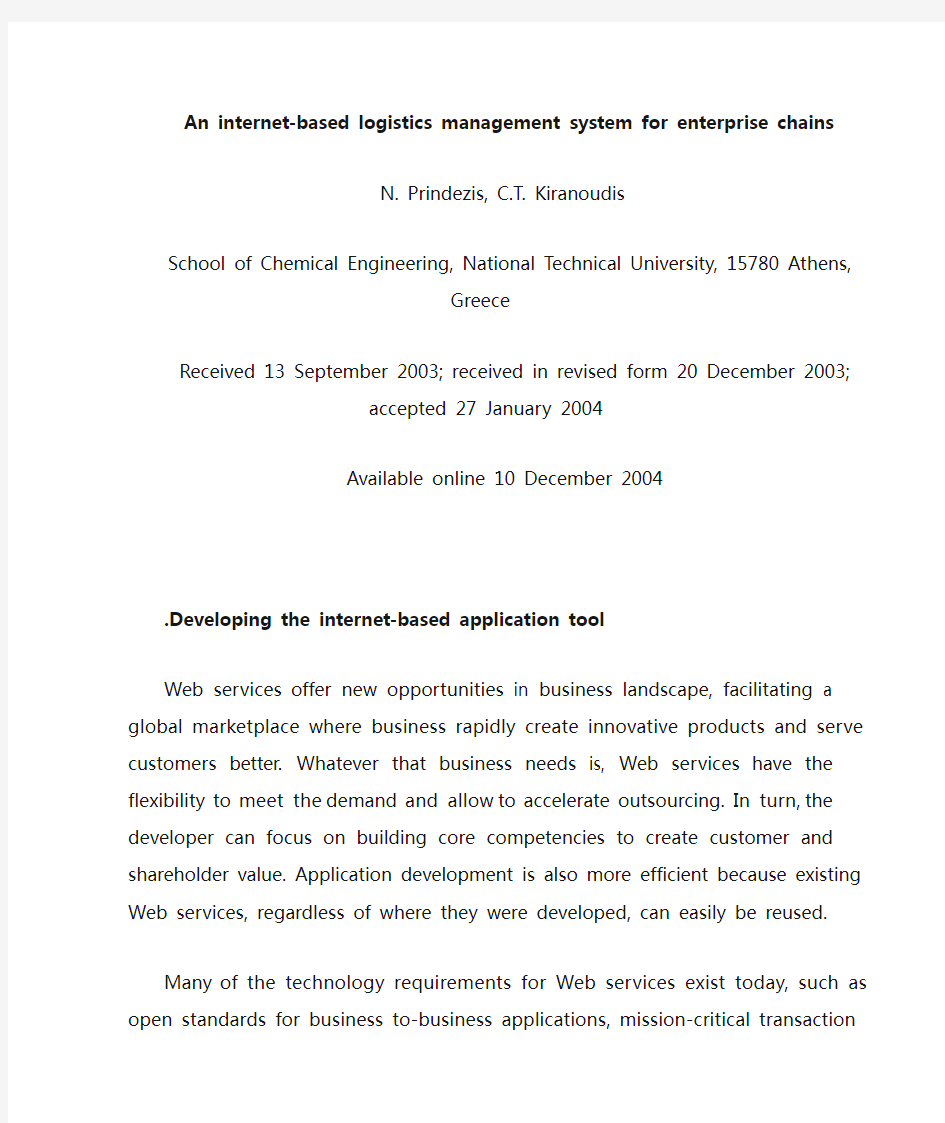
物流管理英文文献以及翻译
- 格式:doc
- 大小:52.00 KB
- 文档页数:6


An internet-based logistics management system for enterprise chains
N. Prindezis, C.T. Kiranoudis
School of Chemical Engineering, National Technical University, 15780 Athens,
Greece
Received 13 September 2003; received in revised form 20 December 2003; accepted
27 January 2004
Available online 10 December 2004
.Developing the internet-based application tool
Web services offer new opportunities in business landscape, facilitating a global marketplace where business rapidly create innovative products and serve customers better. Whatever that business needs is, Web services have the flexibility to meet the demand and allow to accelerate outsourcing. In turn, the developer can focus on building core competencies to create customer and shareholder value. Application development is also more efficient because existing Web services, regardless of where they were developed, can easily be reused.
Many of the technology requirements for Web services exist today, such as open standards for business to-business applications, mission-critical transaction platforms and secure integration and messaging products. However, to enable robust and dynamic integration of applications, the industry standards and tools that extend the capabilities of to days business-to-business interoperability are required. The key to taking full advantage of Web services is to understand what Web services are and how the market is likely to evolve. One needs to be able to invest in platforms and applications today that will enable the developer to quickly and effectively realize these benefits as well as to be able to meet the specific needs and increase business productivity.
Typically, there are two basic technologies to be implemented when dealing with internet-based applications; namely server-based and client-based. Both technologies have their strong points regarding development of the code and the facilities they provide. Server-based applications involve the development of dynamically created web pages. These pages are transmitted to the web browser of the client and contain code in the form of HTML and JA V ASCRIPT language. The HTML part is the static part of the page that contains forms and controls for user needs and the JA V ASCRIPT part is the dynamic part of the page. Typically, the structure of the code can be completely changed through the intervention of web server mechanisms added on the transmission part and implemented by server-based languages such as ASP, JSP, PHP, etc. This comes to the development of an integrated dynamic page application where user desire regarding problem peculiarities (calculating shortest paths, execute routing algorithms, transact with the database, etc.) is implemented by appropriately invoking different parts of the dynamic content of such pages. In server-based applications all calculations are executed on the server. In client-based applications, JA V A applets